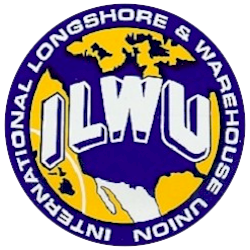
The ILWU Story

The ILWU Story
Health, Pensions and Housing
Health & Welfare
The ILWU pioneered group health insurance, including preventive medical care, vision and dental insurance for workers and their families, with little or no co-payment. And the ILWU won the first union dental plan covering children.
ILWU Pension Plans
The ILWU moved with deliberate care before shaping its demands in the field of pensions, deciding first on certain standards: pension benefits must be in addition to Social Security benefits; they must be adequate for full retirement; administration must be under joint trustees, with bargaining parties retaining joint control over payments, eligibility and handling of funds; the plan must be set up as a cost of industry operation without employee contributions; efficient administration must be assured; the union must maintain continuing responsibility for pensioners and their medical care.
 The
ILWU took its first step in building the union’s health and welfare
program – the ILWU PMA Welfare Plan – in 1949 during Longshore Division
bargaining over wage when the employers agreed to implement a disability
insurance program.
The
ILWU took its first step in building the union’s health and welfare
program – the ILWU PMA Welfare Plan – in 1949 during Longshore Division
bargaining over wage when the employers agreed to implement a disability
insurance program.
In 1950 the Plan was established, and the first comprehensive package of medical, surgical, and hospital benefits went into effect.
A life insurance benefit was added mid-year, and in 1951 partial welfare coverage was extended to dependent family members, with full dependent coverage available in 1953.
The ILWU pioneered full hospital, medical, and surgical benefits for pensioners in 1952. In 1951, and again in 1961, the union initiated an unprecedented health-testing program for its longshore members as part of the larger concept of providing preventive health care.
 Dental
care began 1954 with a pilot program for children. In recent years these
benefits have all been expanded, with employers carrying the freight.
Dental
care began 1954 with a pilot program for children. In recent years these
benefits have all been expanded, with employers carrying the freight.
The package now includes a comprehensive program for alcohol and substance abuse, funded by the employers and administered by the union. The Warehouse Division has fought tirelessly to achieve and maintain similar benefits and trusts, but with mixed results.
Employers have been more successful in resisting or reducing welfare benefits as part of their unending pressure to cut costs, reduce the workforce, and weaken the union.
That warehouse locals have been able to retain major coverage and keep co-payments to a minimum is a credit to the united efforts of the rank-and-file negotiating committees.
Community Housing
The ILWU became the first union on the West Coast to invest in affordable housing for low-income workers when it built the St. Francis Square cooperative housing project in San Francisco with ILWU-PMA pension funds in 1963.
As ILWU Secretary-Treasurer Lou Goldblatt noted at the dedication ceremony, the union’s interest went far beyond low-cost housing.
"In addition, its purpose was
to build a consumer-controlled, non-profit development truly run by its
inhabitants as a democratic community, and to build a fully-integrated
project which would represent all races and groups in the community,"
he said.
Another San Francisco project was undertaken in 1984 when ground was broken for Amancio Ergina Village – again funded by the ILWU-PMA Pension Trust. Similar projects for low-income workers and senior citizens have been organized and supported by Local 141 in Hawaii.
Occupational Health and Safety The union has made great strides in improving safety regulation and enforcement in some of the nation’s most hazardous industries and occupations.
Unfortunately, these improvements often have come about after too many workers have been maimed, killed, or poisoned because of unsafe conditions or exposure to toxic materials. In 1981, for example, it took the death of two scrap yard workers, members of Local 26, to win proper safety measures in that industry.
And five longshoremen were killed during container operations in 1985 before government and industry agencies paid attention to container safety requirements long sought by the union.
In 1987 the union negotiated major revisions in the Pacific Coast Maritime Safety Code (PCMSC) to cover the new hazards posed by containerization, adopting most of the rules developed by the longshore locals in Southern California after the 1985 fatalities.
In 1996 negotiations the union again expanded the scope of the PCMSC, this time to include railroad safety issues that confront longshore workers at new on-dock and near-dock intermodal rail yards.